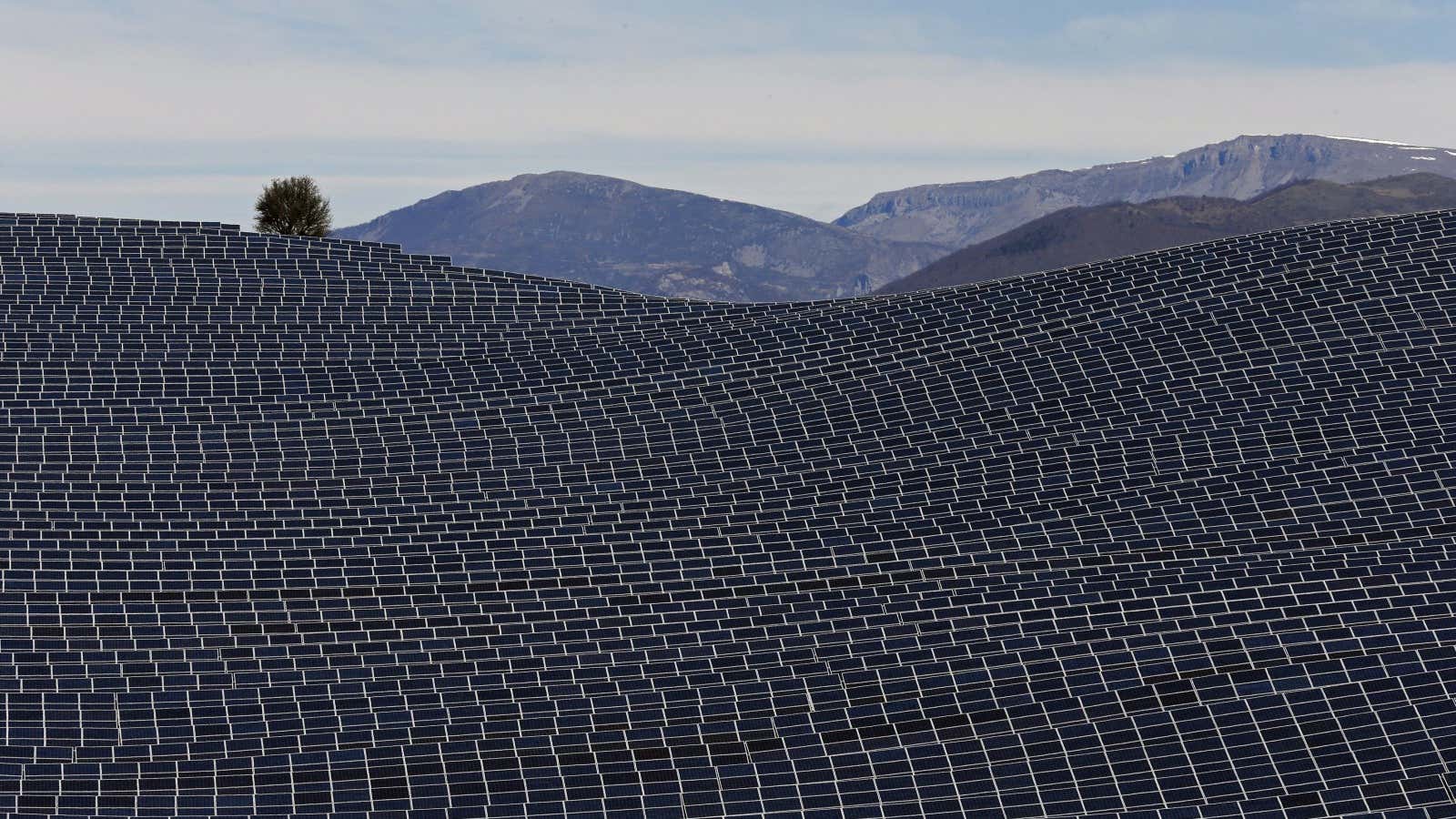Saudi Arabia has a plan to wean its economy off oil. In the biggest sign of what the future of the Gulf state would look like, Saudi Arabia’s crown prince, Mohammed Bin Salman, has signed a memorandum of understanding with Japanese multinational Softbank to build 200 GW of solar power by 2030 at a cost of $200 billion.
These are eye-popping numbers. If built, that solar-power plant will be about 200 times the size of the biggest solar plant operating today. It would more than triple Saudi Arabia’s capacity to produce electricity, from about 77 GW today.
With current technology, solar panels capable of generating 200 GW would likely cover 5,000 sq km—an area larger than the the world’s largest cities.
And, yet, these are not unrealistic figures. Based on data from Bloomberg New Energy Finance (BNEF), the global solar industry produced about 100 GW worth of solar panels last year, and production capacity is ramping up quickly.
But memorandums like the one signed by Bin Salman often don’t turn into reality. “I’ve probably made more binding agreements to grab a coffee,” Jenny Chase, a solar analyst with BNEF, joked on Twitter.
Still, the prince stands to damage his reputation if he doesn’t at least ramp up Saudi Arabia’s solar-power contribution. Though the country has talked about investing in clean energy for quite some time, it was only in 2017 that it began taking bids to build solar-power plants. And if any country could build a solar plant of this scale, it’s Saudi Arabia: the country gets plenty of sun, has vast areas of empty desert, and possibly has the financial power to pull it off.
To come up with the estimated size, we calculated the area covered by one of the world’s largest solar power plant: the 1 GW Kurnool Ultra Mega Solar Park in India, which began operations in 2017. Officially, it covers an area of approximately 24 sq km. The massive Saudi solar power plant then would cover an area of about 5,000 sq km. It’s worth noting that the estimated area is based on current efficiency of solar panels, which will almost certainly increase in the next decade and thus the area is likely to be smaller (though it’s impossible to predict how much smaller). Also, the 200 GW of solar capacity is likely to be built across Saudi Arabia, rather than being concentrated in one area—but where’s the fun in that?
